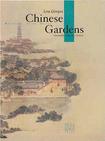中国园林
2003-12
五洲传播
楼庆西
151
100000
张蕾,于红
无
Walking into a Chinese garden,one cannot help but be enchanted by its uniqueoriental flavor;and walking in an atmosphere of tranquility and peace,one will discover something unlikely to be found in Western architecture-delicate and refined ,complex and contained in its quietude.In contrast with natural scenery,the beauty of Chinese gardens lie in their combining culture and art into one.How did the classic Chinese garden take shape and develop?How many prototypes are there in Chinese gardens,what similarities do they share and how do they differ form each other?What experences have been accumulaged throuth the years of garden buelding,and what theories have been formed?Let's walk into the Chinese Gardens and take a closer look. This book is published simultaneously in seven languages including Chinese,English,Japanese,Russian,French,German and Spanish.
楼庆西,1930年生,浙江人。1952年毕业于清华大学建筑系,长期从事建筑历史与理论的研究和教学工作,现为清华大学建筑学院教授。主要著作有:《中国美术全集·建筑艺术编·宫殿建筑》、《中国建筑艺术全集·建筑装修与装饰》、《中国古建筑小品》、《中国建筑形态与文化》、《中国传统建筑装饰》、《建筑摄影》等,并负责《颐和园》等多部专著的摄影工作。
The Formation and Development of the Chinese Garden Hunting and Communion with the Spirits The Symbol of a Unfied State Fully Enjoying the Beaury of Nature Gardents of Pleasure in Prosperous Times A wolrd in a teapot A Vision to Move the Heaven and Condense the EarthPrivate Gardens of Ming and Qing Dynsaties Private Gardens in the South Private Gardens of the North Construction Technology of Private GardensImperial Gardens of the Ming and Qing Dynsties General Introduction The Qppreciation of Some Well-Known Gardens The Comparison between imperrial Gardens and Private GarednsGarden Buliding Masters and Theories on Creating a GarednHow to Appreciate the Beauty of Gardens'Artistic Conception(Realm) The Creation fo Gardens'Artistic Conception(Realm) View-watching AnglesThe Tragedy and Revival of the Famed Gardens
插图:In ancient times it was the traditional belief that the powers of the rulers were bestowed on by the gods. Since the power of the emperor came from heaven, the emperor was known as the "Son of Heaven". The Qin Dynasty (221 B.C.-206 B.C.) overthrew six smaller states and unified the country, and was later superseded by an even stronger totalitarian Han Dynasty (206 B.C.-220 A.D.). This was the beginning of a consecutive 2,000 years of a unified state with centralized power. The establishment of this form of state government marks a turning point in Chinese history. The influence of this historic period on the art of gardening was also deep and profound.From historic annals dating from the Qin and Han periods, we can see many records of large-scale architectural building and construction of gardens during this period which roughly covered 400 years. In the year 221 B.C., the Emperor Qinshihuang unified the country and set up a vast feudal empire. He ordered 200 thousand rich families to move to Xianyang in Shaanxi Province, in order to centralize manpower and resources so he could implement his ambitious construction plan. The Qin Dynasty palace is of astoundingly large proportions. The most famous Qin Dynasty palace is the E-fang Palace which was built south of the capital of that time, Xianyang. In the "Annals of History-Section on Emperor Qinshihuang", "is written the following passage-"...the front palace of E-fang is 500 paces from east to west, and 50 zhang (note: one zhang equals 10 Chinese feet) from south to north. It is large enough to hold 10 thousand people, and tall enough to erect a 5-zhang banner. Emperor Qinshihuang used the Xianyang Palace as the center, and around in a radius extending for scores of miles planned to build over 200 palaces and chambers, which were all to be mutually connected by passageways above the ground. This made this whole region both his palace area and his garden area.
《中国园林(英文)》是由五洲传播出版社出版的。

无